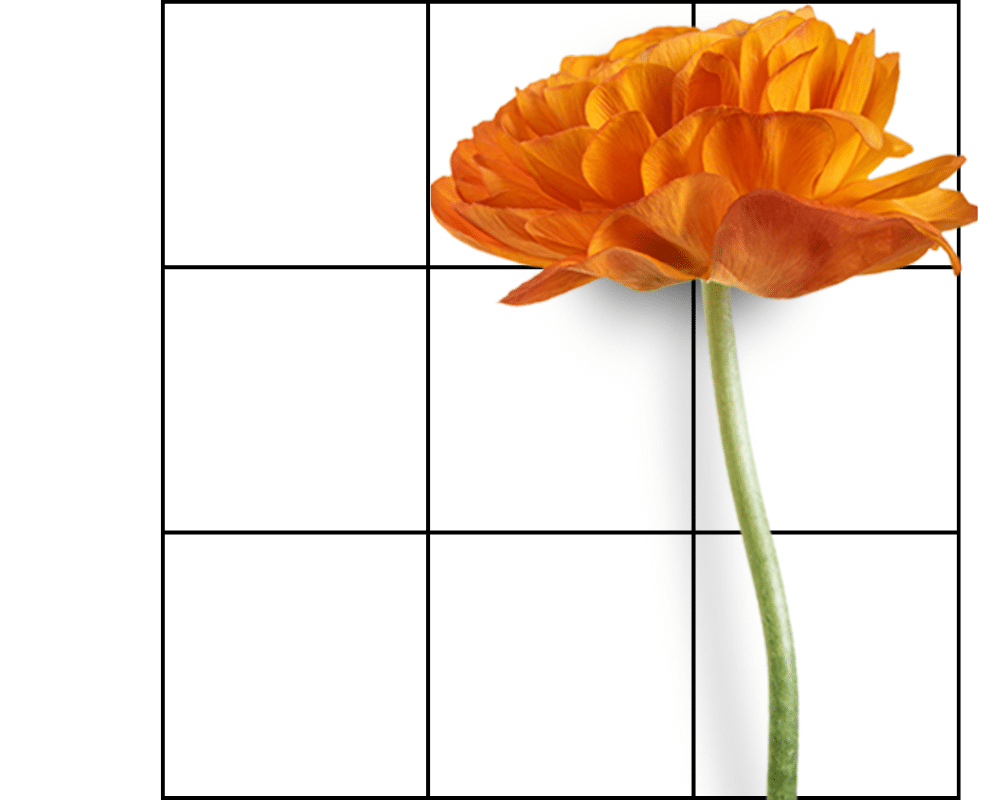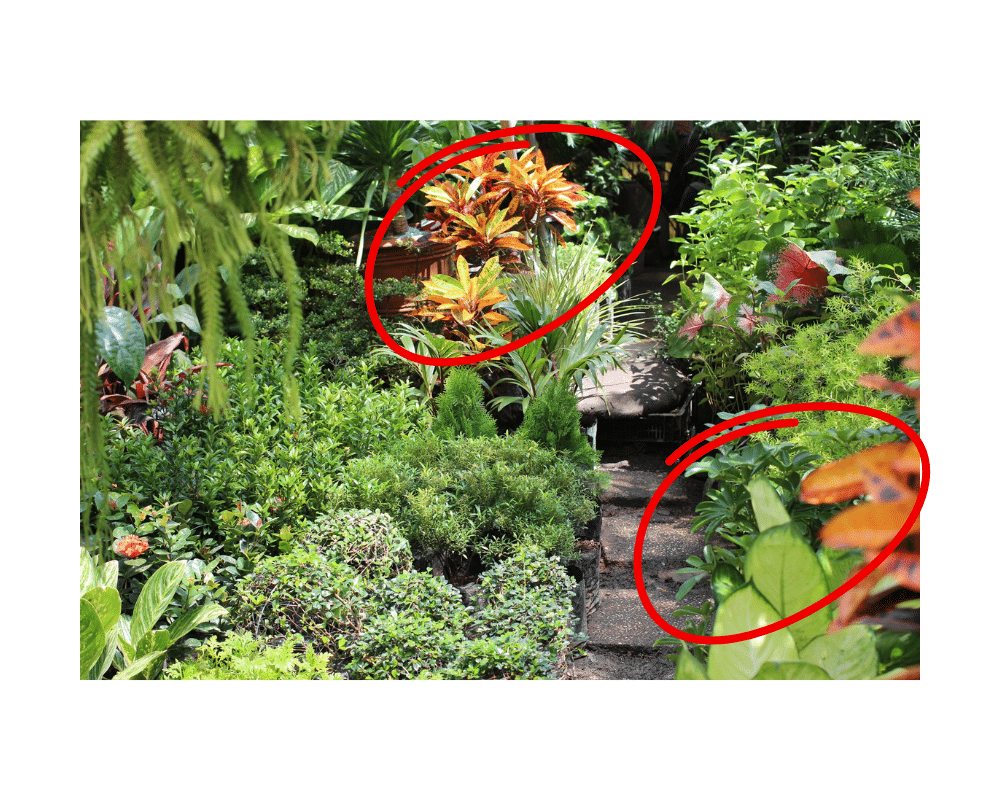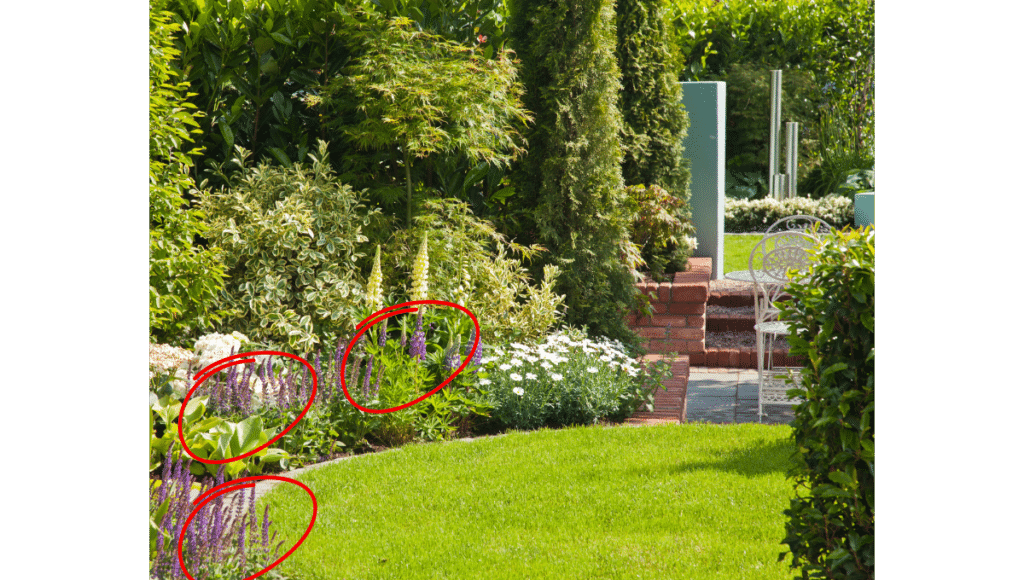The Benefits of the Rule of Threes
The design rule of three is a fundamental principle in visual aesthetics. It will help you create balance, harmony, and interest in any space you are interested in perfecting. Applying this concept to your garden design can enhance its appeal and make it feel comfortable.
The principle is used in all types of design, because it adds a sense of rhythm to whatever you are developing. In painting or photography, place your subject in one third of the image, and it will attract your audience, in writing it makes your subject memorable. Nobody ever forgot the three little pigs! In design, three books on a shelf, or three plants in matching pots, will attract your eye.
How did we get the idea of the rule of three? Nobody is sure; but we seem to have known about it for a long time. We know that three is a naturally satisfying number, big enough to be pleasurable without overwhelming your viewers. Aristotle said make three examples for your argument, he said it was a persuasive number! Artists and architects have learned that compositions made of threes (or multiples of three) have a sense of balance and are pleasing to the viewer.
We call it the rule of three, but it works over larger spaces in multiples of three, or even other odd numbers. So you could call it the rule of six or nine, too.
The Rule of Thirds in Art and Photography Composition
The composition rule used in presentations is similar.

The rule of thirds in photography, https://www.adobe.com/creativecloud/photography/discover/rule-of-thirds.html#:
The rule of thirds is a composition guideline that places your subject in the left or right third of an image, leaving the other two thirds more open. While there are other forms of composition, the rule of thirds generally leads to compelling and well-composed shots. Adobe, creativity
How Can The Rule of Threes Help Me Design My Garden?
Is your garden small? Here are hints for designing a small garden.
Do you like a plant? Buy three of it; you wThill notice that when you plant it, in threes, you will create a very natural effect. It will look as if it could have grown naturally like that.
You can use the rule of three in various ways:
- group plants in sets of three.
- combining three different colors in a flower bed.
- design a garden feature with three distinct elements.
For example, instead of planting a single type of flower in a bed, you could arrange three complementary varieties together, perhaps tall ornamental grasses, mid-sized blooming perennials, and low-growing ground cover—to add depth and texture.
This rule can also be applied to structural elements within your garden. Consider making a three-element focal point, perhaps a bench, a water feature, and a sculptural piece, to create movement and guide your visitor’s eye through the space.
Alternatively, you might layer hardscaping with three types of materials—brick pathways, wooden planters, and stone edging—to add visual complexity. By consistently incorporating the rule of three, your garden will feel more dynamic and intentional while maintaining a natural sense of flow.
More Ways to Use the Rule of Three in Your Garden
In landscape design, the rule of three helps create balance, visual interest, and cohesion. Here are a few ways it applies:

- Plant Groupings: Arranging plants in clusters of three (different heights, colors, or textures) makes a garden look more natural and dynamic. You can use your three plants in a diamond shape; one in front, two behind, or use them in drifts that will soften as they mature. In large areas, where many plants are needed, use repetitions of your groups, or enlarge the groups in multiples of three.
- Three Plants with Complimentary Features: Your garden will benefit from groupings of three plants, with a variety of shapes but similar growing needs. Think of sun-loving salvia, with spire shaped points, cone shaped echinaceia, and flat coreopsis. You can group these together, to grow in the same conditions, but they will add interest to your sunny beds.
- Color Schemes: Using three dominant colors—such as a base, an accent, and a highlight, this keeps the design aesthetically pleasing. Use analogous colors, those side by side on the color wheel or complimentary colors that are opposite on the wheel. -Analogous colors work together because they have the same root.) Your design can also benefit from complimentary colors that have high contrast and stimulate your eye. Time spent making thoughtful color decisions will help guide your visitors as they go through your space.
- Hardscape Elements: Designing with three materials (such as stone, wood, and gravel) adds depth and variation.
- Layers & Depth: Using three tiers (foreground, midground, and background) creates a sense of depth in the landscape. In making the layers use fine textured plants in front of the bed, place the medium sized plants in the next level and put coarse textures with large foliage in the rear.
- Height Variation: Create depth by layering three plant heights. For instance, you could use tall ornamental grasses (like miscanthus) in the back, medium-sized perennials (such as echinacea) in the middle, and low-growing ground cover (like creeping thyme) at the front.
More Issues to Consider When Designing With the Rule of Three

Repeat Elements Throughout the Garden Beds
- Spacing, follow the distance requirements for each plant. This will allow for healthy growth that will fill each space without crowding. If space is still tight use three plants in the color and shape you want but perhaps in different sizes.
- Use scale to create a dynamic composition. Changing sizes of similar plants will prevent a static appearance.
- Vary the plant heights; in most cases you will succeed by using lowest plants in the front rising to highest in the rear. Some designers, however, will use a tall but open plant in the front. This will lightly screen the plantings behind it and create interest.
- Choose an overall color plan to create the impression you want. Avoid random hues, no matter how pretty in the garden center. Make a cohesive color palette your goal. Do you want a soft look with pastel shades or a natural feeling with warm and earthy shades.
- Sometimes you can keep a color similar but change the texture. Think of gray and blue plants with different textures, pointed blue agave, soft blue-gray lambs ear and a soft colored grass or fern.

This rule can be applied to any space – include it in your small front yard or any large space too. It can be applied to one bed or even just one area of a bed, as well as in container gardening plans.
Summary,
The rule of three is a powerful design principle that brings balance, harmony, and visual interest to garden landscapes. By grouping plants, colors, or elements in sets of three, gardeners can create a natural rhythm that pleases the eye and adds a dynamic flow to outdoor spaces. Whether arranging flower beds, selecting plant varieties, or organizing decorative features, the use of three encourages variety without overwhelming the scene. This approach is often seen in professional landscape designs, where odd-numbered groupings create a more organic and inviting look compared to even-numbered arrangements.
Incorporating the rule of three can also enhance depth and perspective within a garden. For instance, layering three different plant heights—such as ground covers, mid-size shrubs, and taller trees—creates a tiered effect that feels natural and well-structured. Similarly, choosing three complementary colors for flowers or foliage can give a cohesive yet lively aesthetic to garden beds. This simple yet effective strategy is perfect for gardeners looking to make their space feel intentional and well-curated without requiring extensive planning or maintenance.
Happy Digging,
